What is a Research Panel and is it Necessary for Market Research

A research panel is a frequently used means for conducting research, including market research (the study of your customers). This method involves studying the same group of opted-in participants through various methods and stages that are developed as part of a research campaign.
The technique that underpins a research panel counters organic sampling, which seeks out research participants, particularly survey respondents, in their natural digital habitats. As such, a research panel is an alternative to random sampling and has various differentiations.
You ought to know all the differentiators of research panels, how they stray from organic sampling, as well as what makes a research panel tick.
With this key information at hand, it will make your research endeavors simpler; it will also allow you to choose the best research method. This is a must, considering that there is a wide range of market research techniques. Panels are just one of many.
You may be wondering if panel research is a viable research method for your business needs or research campaign. Or, you may consider using it in tandem with another research technique or tool.

Luckily, we’ve got you covered on this topic.
This article explains the concept of the research panel in full depth, which can serve as a possible avenue market researchers can explore within the vast array of market research techniques.
What is a Research Panel and is it Necessary for Market Research? Table of Contents
- Defining the Research Panel
- The Role of a Research Panel in the Market Research Process
- When to Use a Research Panel</a
- The Pros and Cons of a Research Panel
- Research Panel Examples
- Why Online Polling Software is Better
- The Online Survey Tool: A Stronger Alternative
- What a Machine-Learning and AI-Powered Survey Tool Does for Your Market Research Campaign
- The Ultimate Verdict on the Research Panel for Market Research
Defining the Research Panel
A market research panel is a pre-recruited and pre-screened group of research participants who have opted in to take part as the studied subjects of a market research campaign.
This kind of research method can involve studying its members repeatedly. In this case, the particular study is called a panel study.
It is also referred to as a longitudinal study, although longitudinal studies don’t necessarily need to involve panels, as there can be longitudinal surveys completed by non-panelists.
As such, it is a way of describing those who have agreed to take surveys on an ongoing basis, which, in market research, are typically members of your target market.
You can use a research panel for a wide range of subject matters. The members of the research panel can include a wide range of people across multiple sets of populations.
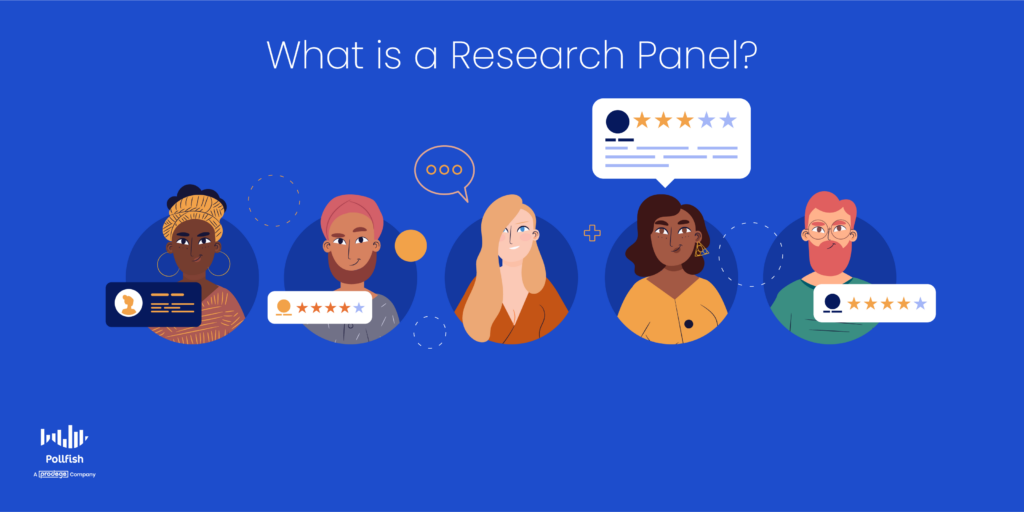
Whether you seek to study the workforce of a company or a major constituent of a national population, the term research panel can apply to all such groups.
The key is to use participants who represent members of your target market and most importantly your target audience also referred to as your survey target audience. That’s because a research panel is a recruitment method used to get respondents to take your survey.
In market research, the participants in a research panel are usually the people who belong to a business’s consumer base.
Moreover, they belong to a particular audience, known specifically as a survey target audience in survey studies. This label can also apply to research panelists, as they too can be asked to take surveys.
The members making up a research panel must share several traits, such as demographics, psychographics, geographic location and more. A market researcher may also study various segments that make up a target market.
There are various methods researchers can employ in their research campaigns, in which a research panel provides insights. These include:
- Interviews
- Focus groups
- Surveys
- In-home usage tests
- Experimentations
- Test marketing
The Role of a Research Panel in the Market Research Process
A research panel is but one process within the encompassing practice of market research. Some businesses may decide to extract data from a research panel alone, while others may use it alongside probability sampling.
Also called organic sampling, this method involves reaching out to all the individuals who fall under the qualifications of your subjects of study. As such, it allows more individuals to take part in the sample.
Unlike many of the sub-methods of organic sampling, a research panel is not anonymous, in the sense that the panelists’ identities will not be hidden from the researcher.
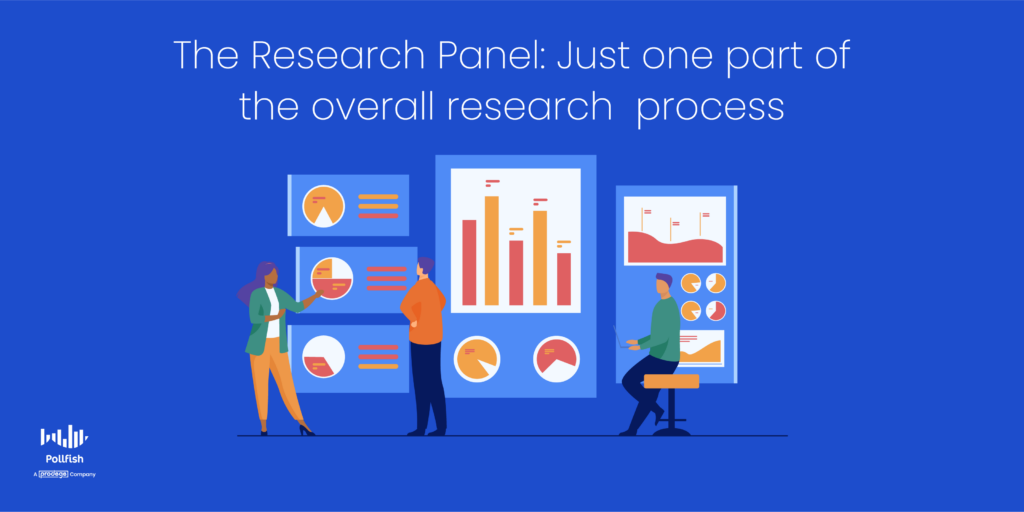
They are still kept anonymous when it comes to sharing the findings with the public, as you wouldn’t reveal the panelists’ identities.
This allows researchers to study the members at a greater depth, in that researchers can match answers with the respondents themselves. This is due to the nature of pre-recruiting participants; when you do so, you’re going to need to collect information on each panelist, some of which may be personal.
This method will allow you to understand if they’re qualified to partake in your studies. As such, you’re effectively putting names and faces with data, essentially identifying each member. Additionally, this allows you to build a profile on each participant, adding bulk by applying multiple studies.
Forming profiles gives you a glimpse into the presence of personas in your target market. A research panel is the starting point in building a persona.
When you’ve profiled panelists through various means (interviews, focus groups, etc.), you have several kinds of data, from which you can form an analysis and draw conclusions.
You can test the prevalence of these conclusions by surveying other members of your target market, i.e., those who are not in the research panel.
Various survey sampling methods will not only complement your research panel but also give it validity and statistical relevance. After all, there are only so many panelists you can interview or meet with.
Even if you study your research panel via surveys, it is not practical to spend a lofty amount of time vetting people to ensure they fit your research campaign. Thus, a research panel may not be the strongest of the various market research techniques.
When to Use a Research Panel
While businesses and market researchers can use a research panel liberally, it is not always in their best interest. This can be due to the size of a business, a limited budget, the objectives of a research campaign and the length of the research study. There are also times when it makes sense to engage in research yourself and other times in which it may be beneficial to work through a professional market research agency such as IntoTheMinds.
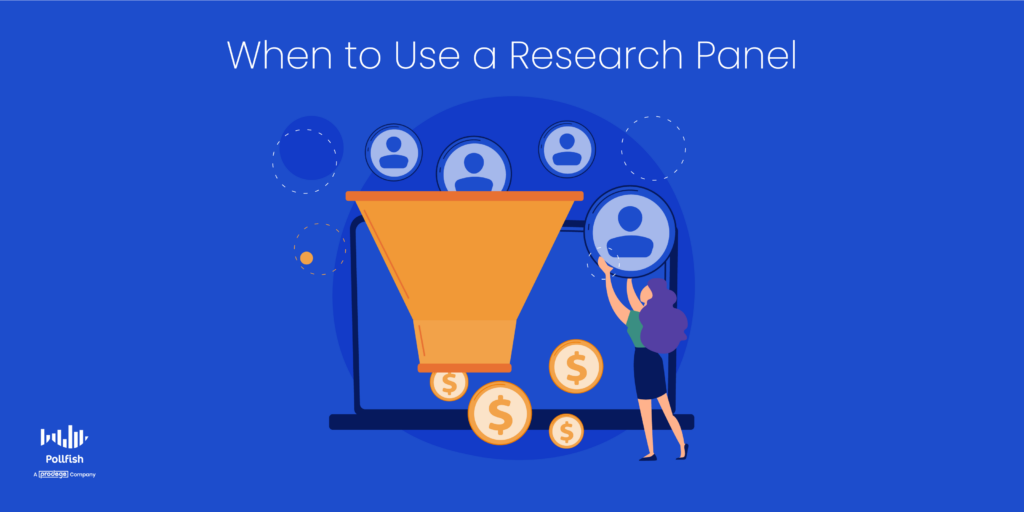
With this in mind, there are particular times in which companies and researchers alike can benefit from using a research panel. These include the following instances:
- Obtaining a constant, in-depth read of a certain group of participants.
- Conducting a more intimate study on a particular group of people.
- Running continuous studies on the same people, ie, for longitudinal studies.
- Gathering data on subjects with scant studies due to rarities. Ex: people aged 100+
- Large research projects that will involve multiple modes of data collection
- When you are performing market segmentation.
- When you are building research or customer personas.
- To fulfill the preference of conducting research in a group setting.
- To gain insights on a topic that you may not have considered from your list of questions/concerns.
- These insights typically arise in conversations, as participants bring up points and considerations that you may not have originally thought of when forming your research plan.
- To assist or act as a helping agent in conjunction with another form of research, such as survey studies.
The Pros and Cons of a Research Panel
The research panel tactic offers advantages and disadvantages that all market researchers should be privy to. Like other research techniques, it is not perfect and for some, the disadvantages may outweigh the benefits, while to other researchers, the opposite may be true.
You should mull over both the advantages and disadvantages that come with this form of research.
The following lists the advantages and drawbacks of using a research panel.
The Pros
- Panel members have a more advanced understanding of the research topic since they can be recruited through a longer vetting process.
- It can be used multiple times on the same survey, to study change within a particular group that represents segments of your target market.
- It’s easier to conduct in recurring intervals, given that you have all the panelists’ information and don’t need to screen them as you would with a new set of participants.
- Deeper reads and longer researcher/panelist interactions are suitable for the 3 main types of survey research methods.
- It is much easier to follow up with panelists, should you need more research, as you already have their contact information.
The Cons
- Lack of privacy: face-to-face interviews, along with phone interviews in which researchers know the identities of panelists can be intimidating.
- Even a panel study lacks privacy, which can lead to intimidation or fear of answering honestly.
- Acquiescence bias: along with other biases, this issue can take shape, as respondents may feel pressured to answer in a particular way, leading to forced or inaccurate responses.
- Panel attrition: Due to re-interviewing, research panels are susceptible to fatigue, loss of interest, or pressure (Points 1, 2), making them easy candidates for attrition.
- Ingenuine change of attitude/ opinion: Interviewing and reinterviewing can change attitudes, in ways that are not always genuine, due to re-interviewing.
- Expensive: Whether you hire an in-house panel or use an external one, it is often an expensive affair, as you will need to pay each panelist. Since this is an ongoing study, you may have to pay them for each session.
- Poor data quality: This is especially true when a panel member is a participant in multiple panel companies.
- The quality of the data may be compromised when a respondent is a member of two or more panels.
- This is because the respondent may partake in the same survey.
- If they answer the same way, you will have duplicate data, but if they answer differently, there might be bias. At any rate, you’re getting data from the same person twice, which doesn’t improve the trustworthiness of research findings.
- Missing out on a larger survey pool: This relates to the aforementioned lack of privacy. Not everyone in your target audience will want to give away their contact info, let alone have their answers be tied to their identity.
- As such, you may not get enough participants for the specific quantity required for your survey sampling size.
Research Panel Examples
A research panel can be applied to all kinds of scenarios and has various use cases. Remember, they can be applied to both long and short-term research, despite being associated with the former more often.
They can be used in market research, which is for business purposes and is centered on customers. Or, they can be used for a wide range of other research types, such as medical, scientific, social, behavioral and educational research.
To help you better understand research panels, the following list includes seven examples of them across different areas of study:
- A business studying the customer buying behavior of three of its customer market segments.
- This is especially useful to compare segments with high and low consumer loyalty.
- A university research group studying the effects of sleep deprivation among students over a semester or year.
- An enterprise company seeking to release the most resonating ad campaigns by comparing how it’s received across the world.
- A condiment manufacturer who is interested in comparing flavor and texture preferences across different parts of the country.
- A business that is intent on following its target market’s shopping habits and how they compare to their competitors.
- This will need to involve research on competitors. That means you’ll need to inquire about them in the panel, as well as perform secondary research to complement the study.
- A healthcare company seeking to find the relationship between device usage and obesity.
- A government program that tracks the success of a new social program for certain populations.
Why Online Polling Software is Better
Online polling software trumps research panels for a variety of objective reasons. There are also various subjective and preference-based justifications for leveraging an online survey tool instead of a research panel.
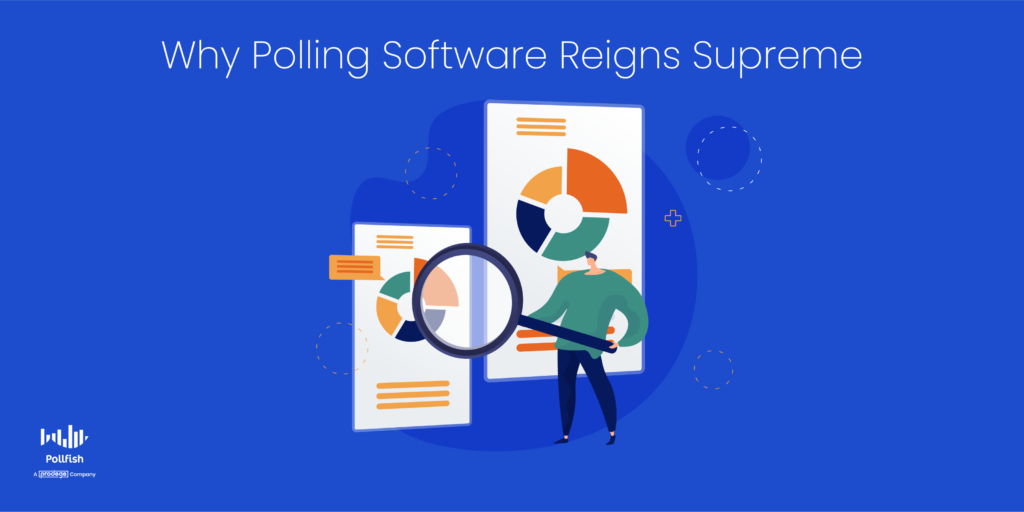
Organic Sampling and RDE
First off, online survey platforms allow you to run random organic sampling, which allows you to reach non-professional survey takers and gain a far larger reach than you otherwise would have.
This is because organic sampling involves what’s known as Random Device Engagement (RDE), a kind of polling that relies on advertising networks and other portals on devices, to engage random people where they are, voluntarily.
Additionally, in Random Device Engagement, the surveys are delivered to users in their natural digital environments, capturing them where they prefer to be. They were not pre-recruited and thus do not face the same pressures and conditioning that they would in a research panel.
As such, they are more likely to answer questions truthfully, as they have no one to answer to, are kept anonymous and have nothing to lose.
Greater Privacy
With far more privacy afforded to them, respondents of organic sampling surveys are also less vulnerable to acquiescence bias and all the other biases that involve the respondents’ reputation.
On the other hand, there’s polling software. This method, as aforesaid, provides respondents with the most privacy, as they are not pre-recruited or pre-screened. In many cases, polling software reaches respondents organically, which affords respondents the most amount of privacy.
Some survey platforms (such as Pollfish), allow you to send surveys to specific individuals instead of simply across a vast network of online platforms; in this case, the study won’t be as private. However, it is another deployment option to expand how you run your survey study.
Greater Reach to Research Participants
It also has a far greater reach to respondents. This, however, will depend on the online survey platform you use. We suggest one that allows you to conduct global surveys with the same ease as you would with local surveys.
Upfront Incentives
When you use an online survey platform, survey incentives are usually mentioned upfront. This is typically the case with a survey platform that partners with gaming sites and other digital platforms that offer in-app awards, which can be either monetary or non-monetary.
With incentives being offered (or at least mentioned) at the fore, all kinds of customers will be more willing to participate in the survey study.
Less Time Consuming
Moreover, an online polling platform isn’t as time-consuming for respondents. This is because such a platform does not simply conduct longitudinal studies — and even when it does, it can target random people who fit into certain customer profiles and customer personas.
It is also far less time-consuming for researchers. That’s because they don’t need to conduct interviews or other actions to recruit participants; the polling software does it for them. As such, it’s a win-win for all the people involved in the study: the respondents and the researchers.
Less Room for Attrition, Boredom and Bias
As such, it isn’t reliant on using the same people repeatedly to take part in a study. In this way, it cuts survey attrition. This is because some panel members may feel exhausted, burned out or simply frustrated with having to continuously be part of a study, especially if it covers the same subject.
As such, using polling software grants you the opportunity to ward off boredom from your respondents, as well as gain accurate responses. As mentioned earlier, panelists are far more prone to acquiescence bias and other biases.
Respondents of a polling platform offering organic sampling are at a far lower risk of being biased or getting bored. The latter is especially true in a platform that offers a mobile-first environment. After all, mobile dominates online web traffic, as over half of web traffic comes from mobile devices.
Thus, a good survey design, especially one built for the mobile space creates a pleasant survey experience, one that intrigues respondents to take a survey in the first place, and most importantly, complete it.
Aside from these advantages that online polling offers over research panels, there are many more. The other pros deal largely with the survey tool itself as opposed to its distribution and high-level polling aspects.
The Online Survey Tool: A Stronger Alternative
While a research panel has several benefits and use cases, online survey tools present a stronger alternative. First off, they have even more use cases and can be applied to all with greater ease.
This is because the survey tool itself does all the recruiting and screening for you. As a researcher, marketer, or business owner, you don’t have to worry about whether your survey respondents fit your target survey audience’s qualifications.
Identifying and acquiring respondents are both taken care of by an online survey platform, that is if you choose a potent one. This means you don’t need to have a pre-study interview to vet potential participants. Instead, everything is automated.
A strong online survey platform offers machine learning and artificial intelligence software to run all of its functions and mechanisms. This means, there is little to no manual labor required on your part.
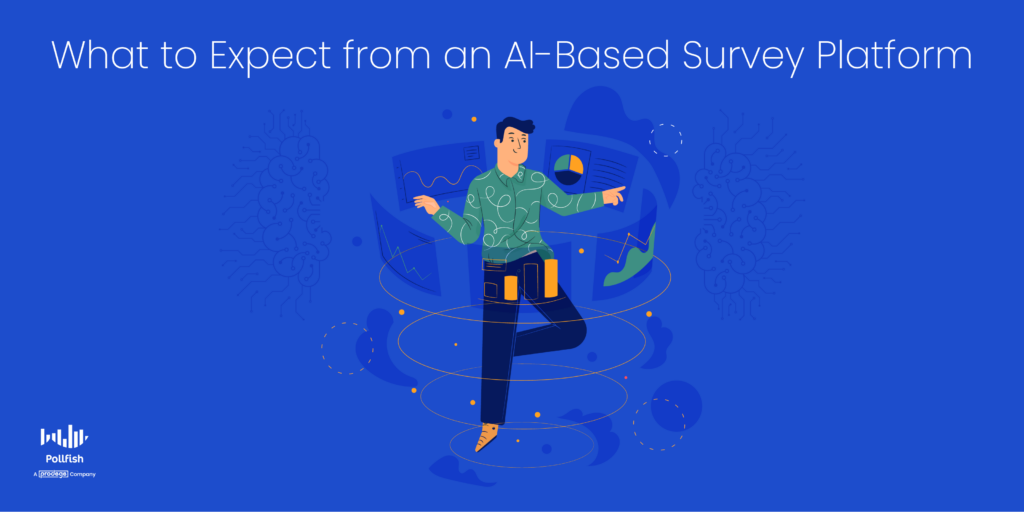
All you need to do in your survey campaign with a strong online survey tool is:
- Set your screener so that your survey targets the correct populations
- Create your questionnaire
- Analyze the survey
Those are the three steps involved in the Pollfish platform. If you’d like to learn how to make your own survey in just 3 easy steps, read the article in the hyperlink.
The online survey platform should handle all the rest. When it comes to running a high-quality market research campaign, there is a lot that goes into staving off poor-quality data and ensuring accurate results.
The following lays out what an AI-powered survey platform can do for your survey campaign:
What a Machine-Learning and AI-Powered Survey Tool Does for YOur Market Research Campaign
A lot is going on behind the scenes of an online survey platform. Luckily, you won’t have to worry about nearly all of them. Regardless, it is crucial to understand the depth of survey SaaS that runs on machine learning and artificial intelligence.
Here’s what to expect from an AI-based survey platform:
- A strong adherence to targeting
- No respondent partially matches the demographic and psychographic screening that the researcher inputs into the platform.
- All survey participants must match 100% of the respondent qualifications. If not, they are disqualified from taking the survey, no matter how close to filling all slots of the criteria they get.

The Audience section on the organic sampling survey platform Pollfish has a rigid adherence to granular respondent targeting.
- Respondent verification
- This mechanism checks respondents for duplicated IDs to ensure each survey completed is done by a unique person, as opposed to one person taking a survey more than once.
- The platform checks IP and MAC addresses, Google Advertising and mobile device identifiers.
- In addition, the platform works with vetted publishers to send unique IDs as an added layer of protection against survey fraud.
- A layer of security in the questions themselves
- In-survey questions are designed as yet another layer of security against survey fraud.
- For example, a question can request respondents to answer a simple math problem.
- Or the survey would include identical questions with the response options re-ordered to verify answer consistency.
- Antibot Policy
- Bots are no match for an AI-powered platform that is designed to disqualify them from taking a survey.
- Zero tolerance for VPNs
- Most businesses and research campaigns put qualifications based on geographies.
- A respondent on a VPN would tarnish any study with filters on who gets to partake in the survey based on location.
- The Pollfish zero-tolerance approach to VPNs ensures the veracity of respondents’ location.
- Removal of incomplete surveys
- This speaks for itself, as surveys are meant to be fully completed. A partially complete survey would provide insufficient data.
- Incomplete surveys are especially problematic in surveys with follow-up questions to past questions, or those seeking more depth to a certain issue.
- Removal of surveys with suspicious activities
- Surveys with any questionable behaviors are rejected.
- This includes the removal of the following:
- Answering open-ended questions with nonsense
- Attempting to sign in from multiple countries/devices at once.
- Taking an inappropriate amount of time on the survey.
- Multiple layers of quality checks
- The survey platform uses a technical layer to perform other quality checks.
- This process includes our technical experts continuously working to avoid survey fraud.
- There are several layers that we use to maintain good data quality. These include checks on the following:
- Hasty answers Check: catches respondents who answer faster than the average time needed to read the questions.
- Reset ID Check: Activates when the respondent answered the same survey previously, but with a different device to avoid the same respondent from taking the survey more than once.
- Gibberish Check: Checks for answers contain nonsensical text. This is the kind of text without real words, such as “jnfjv vdf gre.”
 Avoid receiving gibberish answers thanks to the Pollfish AI-powered survey platform
Avoid receiving gibberish answers thanks to the Pollfish AI-powered survey platform - Same IP Participation: Checks if a survey has been completed before within a certain time from the same IP address of the respondent’s device.
- Carrier Consistency: Assures that the carrier of the respondent’s internet service exists in the targeting market.
- Specialized questions to identify those not paying attention
- Aside from a layer of security in all questions, we offer specialized questions that detect poor data quality.
- These include the following question types:
- Red herring questions: Asks questions with odd answers to assure respondents are paying attention.
- Trap questions: Finds who is paying attention to a command, usually one that asks to select a negative response. Responders who choose positive responses will be caught.
- Quality Questions: Similar to red herring questions, they check if respondents read and understand what’s being asked.
- Constant iteration until all quotas are met
- With the agile research approach, the platform doesn’t merely provide speedy insights.
- Instead, it creates constant iterations until all the quotas and the desired amount of completed surveys are met.
- As such, the platform doesn’t cease, or pause (unless you set this command on your dashboard).
- It allows you to gain the proper amount for your sampling pool.
- With this, no survey pool is too large (relative to the necessary sampling size).
How else do research panels compare to an online survey platform?
Respondents can rest assured that they do not need to give away their data. To add to this, they can still be incentivized to take part in a survey study.
An online survey platform does all the heavy lifting in terms of retrieving responses, while in a research panel, the researcher has to make sure that all the participants respond adequately. This is to say that the researchers themselves must check for gibberish answers, questions left unanswered and much more.
This is especially more difficult in focus groups and one-on-one interviews, in which a researcher has to make sure everyone participates in the former, and that the panelists are willing to truthfully answer all the questions in the latter.
An online survey tool also effectively eliminates the need to worry about survey response rates, as it keeps iterating until the preset requirements are met (including the number of respondents).
As such, researchers have plenty to gain for their research needs from using an online survey tool in tandem with a research panel, or even as a replacement for a research panel.
The Ultimate Verdict on the Research Panel for Market Research
A research panel is a useful method for conducting market research, particularly for studying the same group of participants to monitor their opinions and behaviors and changes thereof.
However, a productive market research campaign will rely on using more diverse methods to extract data. This involves using random organic sampling, which forgoes the conditioning and pressures of a research panel.
As such, you should opt for a survey platform that offers RDE, or Random Device Engagement, which, as mentioned earlier on, distributes surveys randomly, across a wide network of digital properties. This includes websites, mobile sites and mobile apps.
With this survey function, the platform does all of the work when it comes to identifying respondents and covering all quotas. That means you don’t need to do anything in this regard, as the platform performs these tasks.
But there’s more.
To piggyback off of the section on the role of the research panel, online surveys and research panels do have some beneficial similarities. For example, they’re both ideal for creating and validating personas.
A research panel can identify a persona over several rounds of interviews/ surveys/ etc., while an online survey tool can conduct further research to find whether those personas are statistically significant.
Thus, these methods work well hand-in-hand when it comes to conducting market research. A strong online survey platform will ensure a synergistic relationship between random sampling surveys and research panels.
It should allow you to survey specific people, such as via email, or whichever digital channel you seek to use. Luckily, there’s the Distribution Link feature, which enables you to do just that.
Frequently asked questions
What is a research panel?
A market research panel includes participants who have willingly opted to participate in a research group regarding a specific subject. These members are pre-screened and pre-recruited.
Why are research panels important in the market research process?
Research panels are essential because they are not anonymous, unlike the respondents who take the surveys incognito. This is important because it allows researchers to find out everything about the members to match answers with the respondents themselves, ruling out chances of inaccuracy.
When should businesses use a research panel?
Businesses should set up a panel to facilitate in-depth research of audiences and their behavioral patterns or conduct a detailed, intimate study on customers. Large research projects that require multiple modes of data collection or market segmentation also work well with a dedicated research panel. You can also use them when building customer profiles.
What are some pros of using a research panel?
Panel members usually have a more advanced understanding of a research topic. Research panels are also easy to conduct in recurring intervals, and researchers do not need to screen information as they would with a new set of participants. In this way, it is faster and more efficient.
What are some cons of using a research panel?
With a panel, participants do not have privacy. They may have to participate in interviews which can be intimidating. This may pressurize a respondent to answer in a particular way, leading to an incorrect response. Research panels are also prone to fatigue, loss of interest, and panel attrition. Also, hiring a research panel is usually costlier as you may have to pay the participants for every session.
Pollfish Marketing Team
Ready to Try Pollfish?
Create your survey with AI, target high-quality respondents starting at $0.95 per complete, and start getting results in just minutes in real-time. From running a simple product concept survey to managing a constant stream of trackers for dozens of clients in dozens of countries, we’ve got you.


 Avoid receiving gibberish answers thanks to the Pollfish AI-powered survey platform
Avoid receiving gibberish answers thanks to the Pollfish AI-powered survey platform